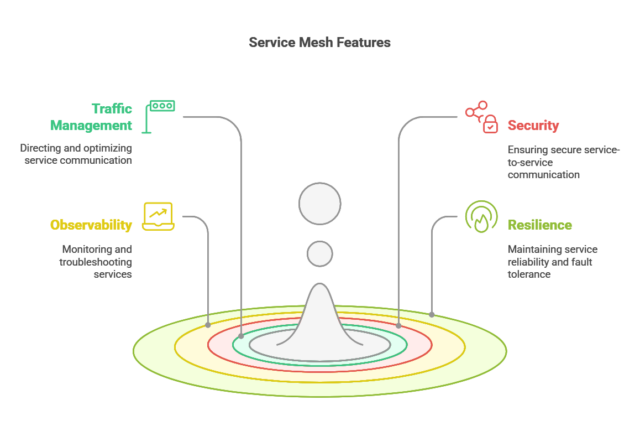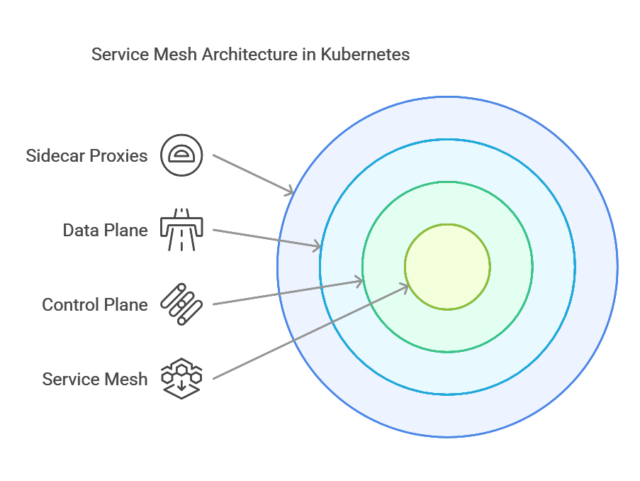Introduction
Kubernetes has revolutionized the way we deploy, manage, and scale applications. It provides the infrastructure needed for managing microservices at scale, ensuring efficient container orchestration. However, with Kubernetes’ flexibility and the increasing complexity of microservices, service-to-service communication becomes increasingly challenging.
A key solution to this is the use of a service mesh. But, when exactly should you use a service mesh in a Kubernetes environment, and why would you need one? This blog explores when to consider implementing a service mesh in Kubernetes and the benefits it provides.
What is a Service Mesh?
A service mesh is an infrastructure layer designed to manage, secure, and observe the communication between microservices in a distributed application. It operates by managing traffic between services, ensuring reliability, security, and observability without altering the application’s code.
Key Features of a Service Mesh
- Traffic Management: Directing traffic between services, including load balancing, retries, and circuit breaking.
- Security: Enforcing mutual TLS (mTLS) encryption for service-to-service communication, ensuring secure communications.
- Observability: Collecting telemetry data like metrics, logs, and tracing to monitor and troubleshoot microservices.
- Resilience: Ensuring services are fault-tolerant by managing timeouts, retries, and health checks.

How Does a Service Mesh Work in Kubernetes?
In Kubernetes, a service mesh typically integrates at the pod level, using a sidecar proxy (often Envoy) within each pod. These sidecar proxies intercept all incoming and outgoing traffic to and from the application, allowing the mesh to control communication.
Components of a Service Mesh:
- Control Plane: Manages the overall configuration of the service mesh, including policies, security rules, and routing configurations.
- Data Plane: The sidecar proxies that are deployed alongside each service, responsible for handling the actual communication and traffic management

Why Should You Consider a Service Mesh in Kubernetes?
Here’s why adopting a service mesh might be a good decision for your Kubernetes setup:
- Centralized Control
A service mesh centralizes the management of traffic, security, and monitoring. Instead of configuring each individual service for load balancing, retries, or security, the mesh manages these configurations globally, reducing the overhead on developers and operators.
- Reduced Development Overhead
Implementing a service mesh allows developers to focus on business logic rather than worrying about the intricacies of networking, security, or observability. The service mesh handles many of the operational tasks automatically.
For example, instead of writing custom code for load balancing or service discovery, you can rely on the service mesh’s control plane to handle these tasks seamlessly.
- Improved Scalability
A service mesh allows your Kubernetes application to scale more effectively by automatically handling the distribution of traffic, load balancing, and service discovery. As your application grows and the number of microservices increases, the mesh provides a scalable solution to manage the growing complexity.
- Future-Proofing Your Application
As organizations move toward hybrid and multi-cloud environments, a service mesh ensures your application can seamlessly operate across different infrastructures. A service mesh provides consistent communication policies, security rules, and traffic management, which is critical for multi-cloud deployment

Conclusion
A service mesh in Kubernetes is an invaluable tool for managing complex, distributed microservices architectures. It provides powerful features for traffic management, security, observability, and resilience. However, it’s important to carefully evaluate your application’s needs to determine if a service mesh is the right solution, as it does introduce some complexity and overhead.
